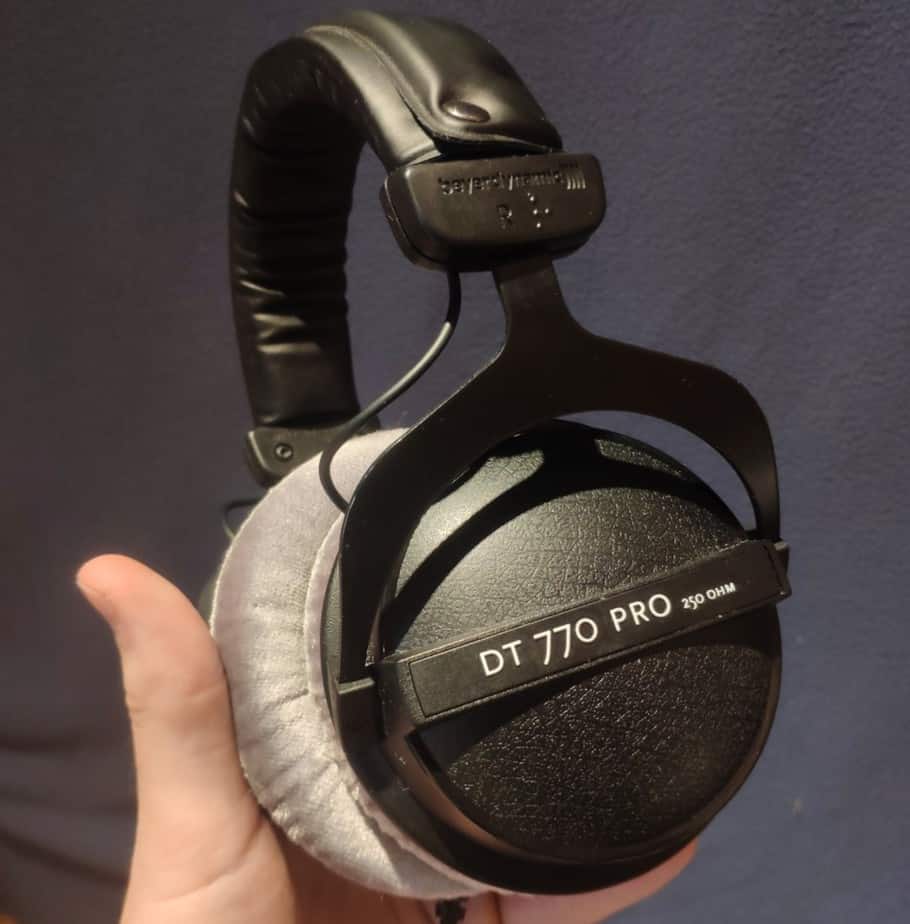
Deciding which headset to get can be a very confusing process, especially if you are just getting into the world of audio. So before rushing to buy one that just looks awesome. Think about your purchase and how you are going to use it.
After researching and considering two dozen of headsets, and trying a whole bunch of them. I found my favorite to be Beyerdynamic DT 770 Pro 250 ohm(link to check the price at Amazon). This headset gives you studio-quality sound and gives you incredibly clear natural sound. It’s also very comfortable to wear for long editing sessions.
After trying a lot of headsets in different price ranges, an important takeaway is that you get what you pay for. Like with most things, I encourage you not to go for the cheapest headsets as the overall quality of these just isn’t that great. But you only get what you pay for to a certain price range, after that you are paying for just small (for normal people) unnecessary improvements.
Things to Consider Before Buying
Before buying there are a few things to consider. Actually, there is endless stuff to consider once you dive into this stuff. But I will share the factors I’ve found to be the most important. If you want the short version scroll down to the summary.
What Type of Headset
First of all, it’s what you are going to use them for. Since we are making a video our best choice is to get a monitor/reference headset. These are headsets that give us that natural sound without coloring it too much (non-manipulated sound).
Over-ear or On-ear headset?
Ok, so you got two ways of wearing the headset too. I’m sure you know about this. There is the headset that’s placed on top of your ear and there is the one that covers your ear.
When you are going to use them for a long period of time, I would highly recommend getting the ones covering your ears. Which are the over-ear ones! If you are using the on-ear for hours at a time, it will start to get uncomfortable. (Since you got constant pressure against your ear.) At least it does for me and a lot of other people.
Closed-back or Open-back headset?
This is another factor to consider while choosing a headset. When using an over-ear headset you got two types to consider depending on what you’re going for.
The closed-back headset is like the name implies. Here the cups which are covering the ears are closed. There are no holes in the cups and therefore they hold much better on to the sound and less of it will leak out to the outside world. And it will help against noise from the outside world.
In other words, it isolates. Most closed back-headsets provide about 10 dB noise reduction.
In the picture below you can see both types, where the closed-back is the one to the right.
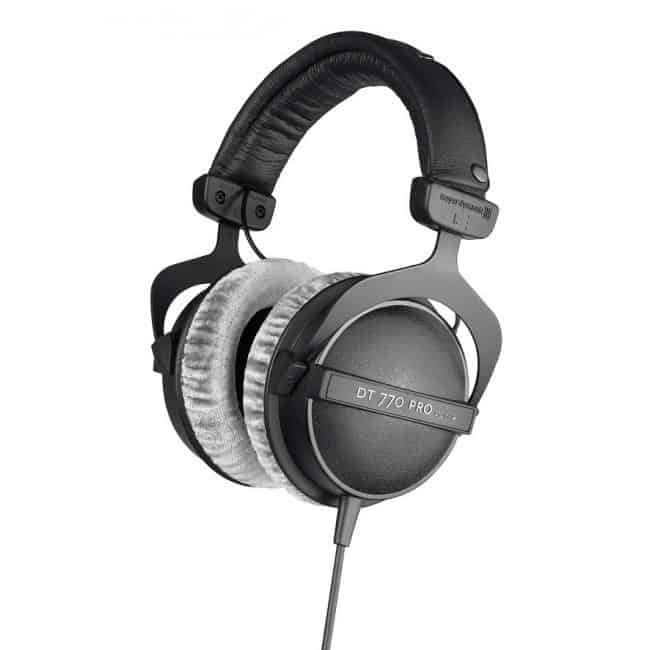
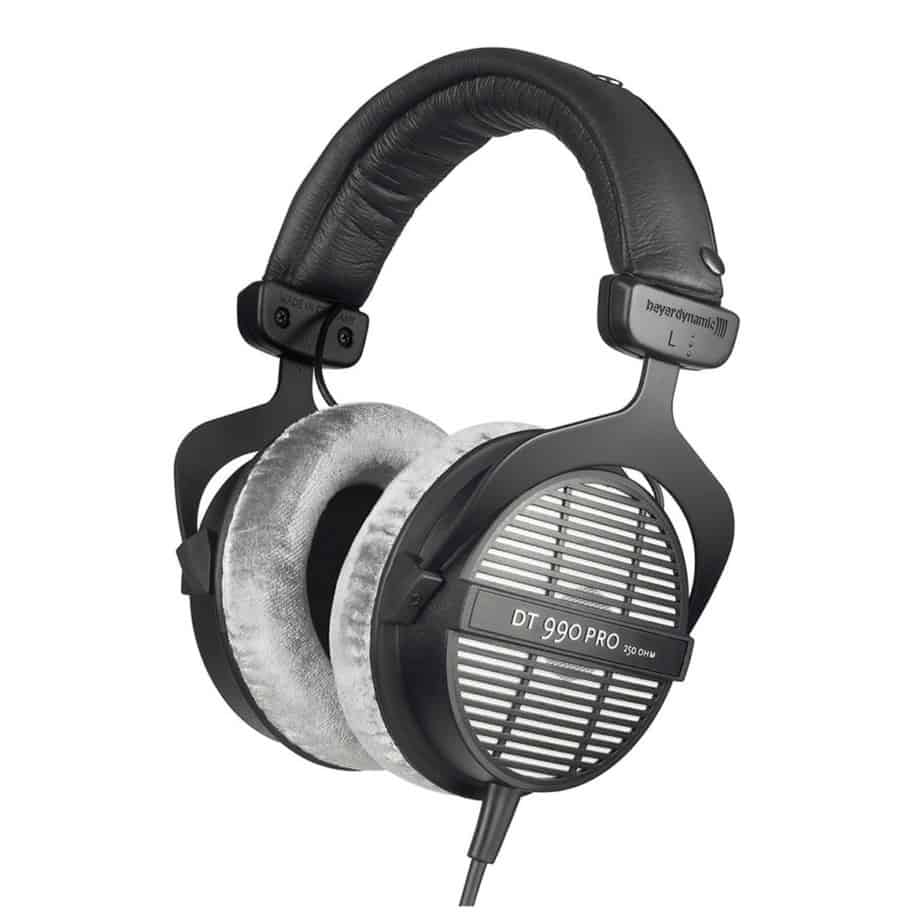
The open-back headset does not isolate the audio as the closed-back does. So if you’re in a place where there is a bit of outside noise you will hear this inside the headset. Also if there is people around you they will easier hear what you are listening to.
So why choose an open-back headset at all? The benefit is that it gives you more of that in-the-room listening experience. While with a closed-back headset you will get a more intimate sound like it’s in your head.
The open-back headset will give you are more accurate sound. So if you want the most natural sound possible they are the best choice (under the right conditions). If you are only going to use them at home and have a place where it’s no outside noise open-back is your best best. But if you live with someone or are going to use them in public places you may not be fully satisfied.
I prefer the closed-back. When I’m in the zone and working I don’t want any outside noise to disturb me. Also, I use them in a lot of different locations where that 10 dB “noise reduction” is really appreciated.
Frequency Rate
The higher frequency the headset can deliver the more accurate sound it can reproduce. Up to a certain number.
Human hearing is between 20-20 000 Hz, so you want to make sure they at least can deliver 20 000 Hz. So it’s said that we hear no more than 20 000 Hz but that we can actually feel frequencies up to 40 000 Hz.
Therefore including these frequencies as well will most likely give a richer sound! The Beyerdynamic DT 770 Pro delivers up to 35 000 Hz, so you will get plenty of “infra- and ultrasonic frequencies”.
The Impedance (ohms)
So headsets are dealing with electricity and stuff. And how they are dealing with it, determines which quality of the sound they are producing.
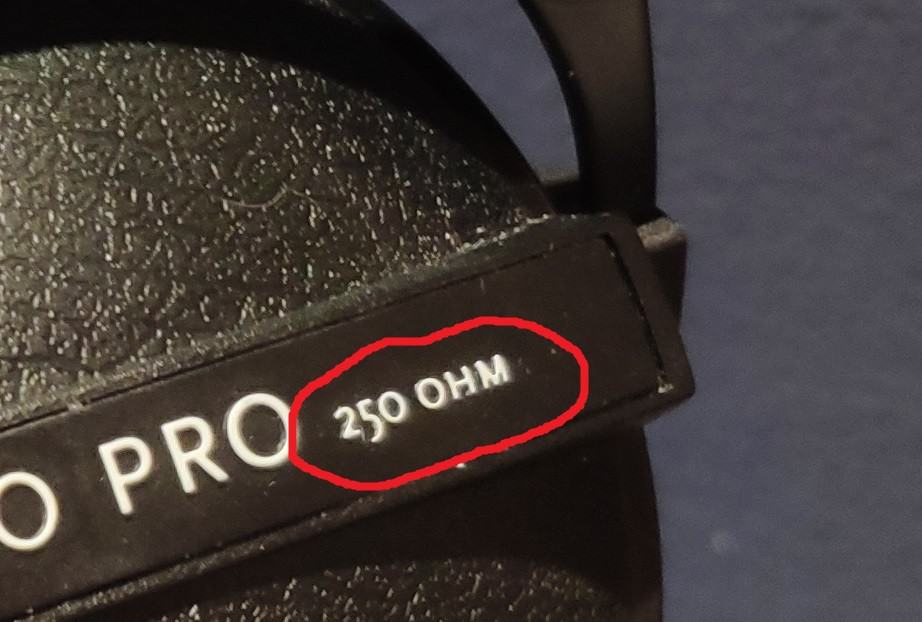
Every headset has ohm written in the specification. This has to do with how much resistance there is in the circuit. Why is there more resistance in some headsets? This is because of the voice-coil in the headset which is one of the components responsible for producing the sound. The thinner the wire in the voice-coil is the clearer the audio produced is.
While you will get better sound from high impedance headsets, the majority of headsets today are low impedance. These can be played perfectly fine on phones and tablets etc. As they don’t need as much juice as the high impedance ones. So if you want to buy some high impedance headphones over 100 ohms, you will need an amplifier to get the most out of it. (I’ll show you mine).
There is a lot more to this process but I don’t have the knowledge to go too much in-depth on that. The most important thing to understand is that; higher impedance will give a more detailed and natural sound. But it may require extra power.
Beyerdynamic DT 770 Pro comes in 32, 80 and 250 ohms. All of these are great, but if you want the 250 ohms you should get an amplifier as well.
Everything in this article applies to the 32, 80, and 250 ohms. The only difference is that the 250 needs an amplifier for it to live up to its full potential.
Headset Amplifier for High Impedance
If you decide to go for the Beyerdynamic DT 770 Pro 250 ohm, I recommend getting an amplifier. If not I would rather buy one of the other two headsets on the low impedance side. These will work great without, but getting the 250 you will get slightly better sound quality.
The thing is that your pc already has an inbuilt amplifier and this will work great with lower impedance headsets. But as soon as you get on the higher end; 100 ohms and higher, it’s recommended to get an amplifier. The amplifier is plugged into your pc, and then you plug your headset to this.
There is alot of different amplifiers out there, and most of them will be able to power the headset. But you don’t want to just buy a random one, as the quality of them varies alot!
Finding the right amplifier when you are new to the audio stuff can be intimidating. There is a lot of different information to filter out. It’s an entire process as the experts here are called audiophiles and have a lot of knowledge. The only thing is that most of them have different opinions. So researching this topic can be frustrating. But of course, I’ve gone through all of this trouble for you, I want only the best for the supporters of Video With Jens.
Ok, so the thing is amplifiers can quickly become VERY expensive. And they can be quite big. Then they are stationary, but I wanted one that I could easily bring around. Especially when I’m traveling.
You also got something called DAC (Digital to Analog Converter), this is what makes the song you want to hear into an actual audio signal. More correctly it takes the digital data and transforms it into an analog audio signal. This is the language the amplifier understands, and then in turn send it to the headphones and they produce your favorite Elvis song!
A good DAC will simply transform better than a bad one and give a better audio signal which will produce a clearer sound!
Therefore both the amplifiers I recommend have Amplifier and DAC built-in. The reason I recommend two is that the one I own may be a bit expensive to buy if you’re on a budget. But it’s cheap in the audiophiles world and one that everyone talks warmly about.
I got the Micca OriGen G2, this is a portable DAC/AMP which supports the 250 ohms without any problems. It’s very good in the price range ($100). It’s simply really good.
If you don’t want to spend that much money a lot of people talk warmly of the FiiO E10K DAC/AMP in combination with the 250 ohms headset ($60). But according to the producer it’s only meant for headsets up to 150 ohms. Anyways it’s not bad, but you may not get the full potential in the 250 ohm model with this one.
Comfort and Size
Beyerdynamic DT 770 Pro is incredibly comfortable to use. I can spend hours with these on without any problems at all. I would almost consider wearing them when I’m not listening to anything too (joking). But it wouldn’t be any problem in terms of comfort!
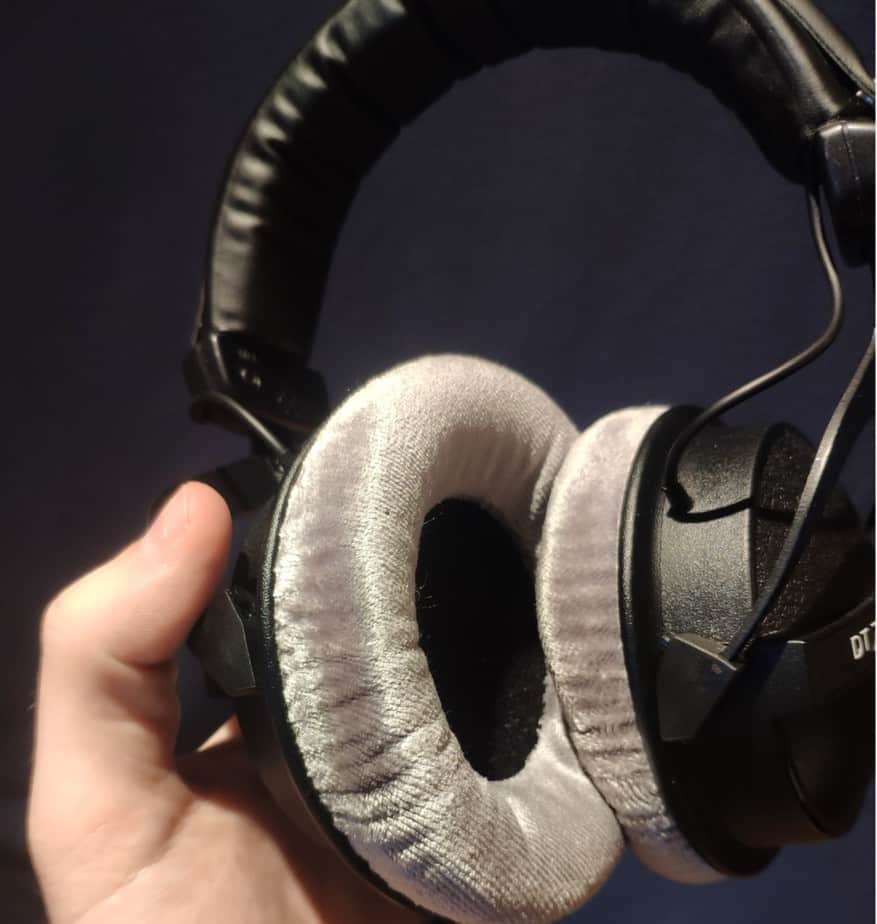
The cans have thick padding, perfectly soft, just right as you won’t feel the edges of the cans at all. The pads are covered with this very soft velvet-like material, which is a blessing against the skin. Also when wearing them for a long time you won’t get hot as skin.
The cans are pretty large and cover the whole ear if they are not a lot bigger than the average of course. They are pretty deep, not the deepest. But most people will not experience any problems with the inside pressing against the ear. I can feel them touching my ear, never thought about it actually before writing this. The average person does not have to worry about this.
It’s also a lot of room for adjustment in relation to your head size. If you have a small head or a large head it will probably fit perfectly! The headband is also soft and comfortable covered with some plastic “fake” skin material but nothing to complain about.
Build Quality
Beyerdynamic DT 770 Pro is extremely solid built! It can take a lot of beating and is very simplistic and clean with minimal things to break. It has this retro look like it’s from the 80s or something. There is not all this fancy crap on it, which I really appreciate. Very professional.
The cups are pretty big as they cover the whole ears, but it’s very well designed. So you will not look like Dumbo as a lot of headsets do. Here’s me at the headquarter of Video With Jens wearing them.


It a very solid build as stated. The headband is metal, the earcup forks are in metal and the cups are in very solid plastic which has this nice texture on top of it. Looks cool. The headset is actually assembled by hand in Germany, so it’s not this typical mass-produced headset.
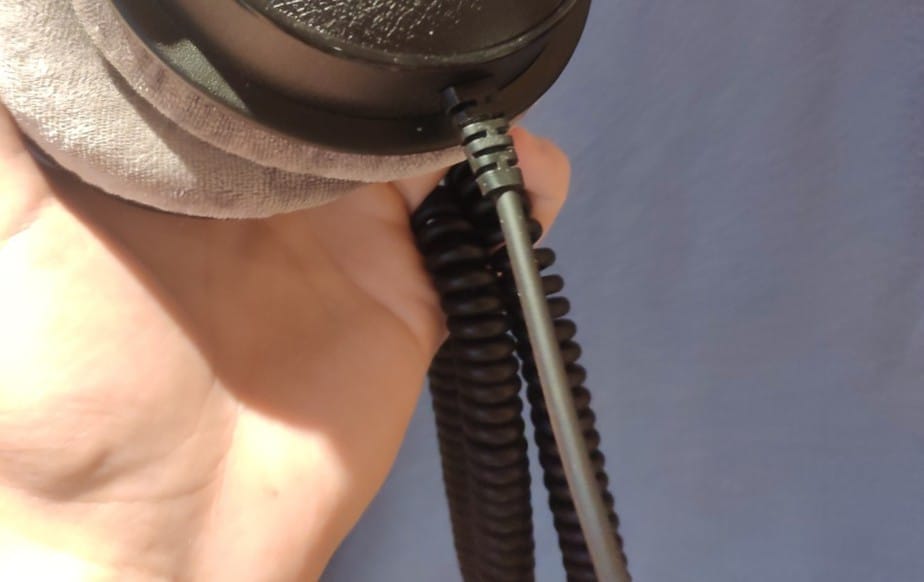
Every part of the headset is replaceable, except for the cable which does suck a little. But it’s of high quality and it has not really been a problem for this headset. This headset is used in a lot of studios and by professionals. They (we) need a headset that’s durable and of high sound quality! When you have this headset, you will start to notice it everywhere.
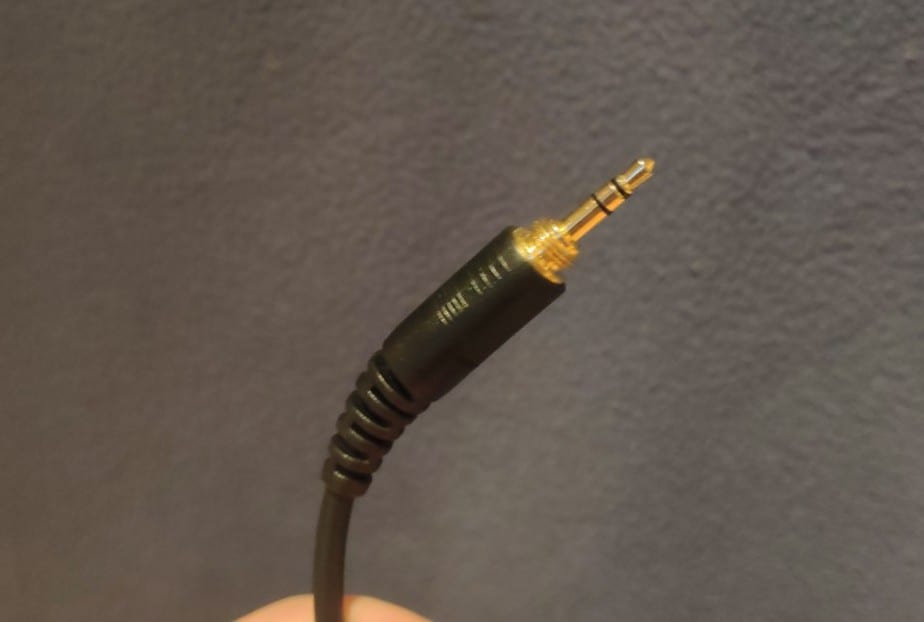
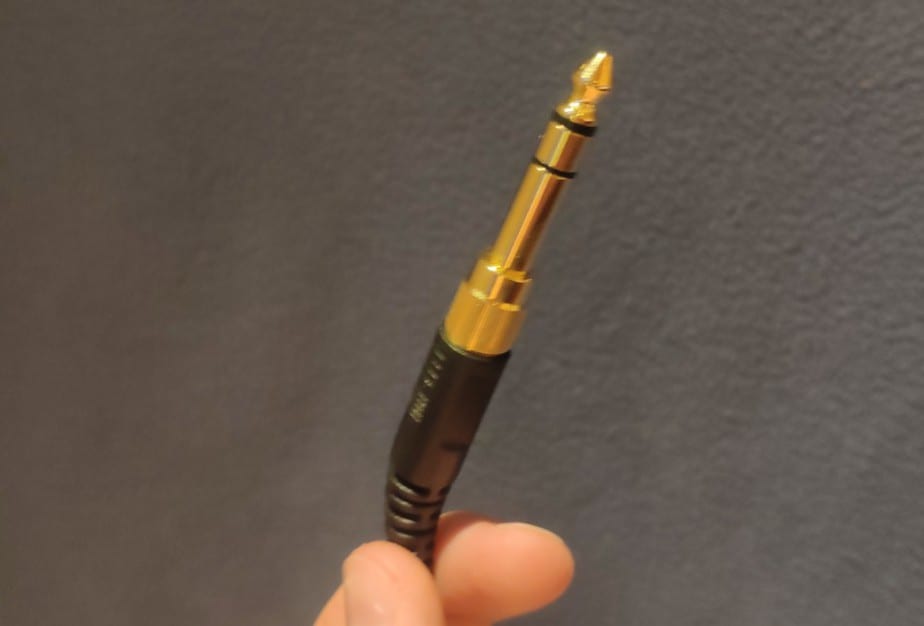
Summary
Okay, so by now you have a pretty good idea of things to look for in a headset. I’ve researched this a lot and in the end, the winner was definitely the Beyerdynamic DT 770 Pro. With impressive sound, high build quality, and very comfortable over long periods.
You can buy this headset and feel good that you’ll get the real deal. You really get good value for the money here, remember this is also what the professionals are going for. That’s a good sign, the quality is non-complainable and there is no need to spend more money on more expensive stuff.
It’s time to decide which of the different impedance variants you want. I’ve created a list that can help you:
Beyerdynamic DT 770 Pro 32 Ohms: This is your choice if you are going to use it on a lot of different devices and don’t want to worry about getting an amplifier. Here’s a link to check the price at amazon.
Beyerdynamic DT 770 Pro 80 Ohms: This headset is getting closer to the higher impedance headsets, but you will be totally ok playing it without an amplifier. People who have tested it, have found that this headset has slightly more bass than the others. Some people claim to have gotten a little bit better sound by using an amplifier but it’s not a must at all. Get this if you want the middle option (link to amazon).
Beyerdynamic DT 770 Pro 250 Ohms: This is the one I personally own and I love it! Now you’re on the high impedance side and an amplifier is required to get the full experience of it. It does work without an amplifier too, but then there really isn’t any point in getting it. Get this one if you want even clearer and more natural-sounding audio! (Link to Amazon, which is where I bought mine).
Beyerdynamic DT 990 Pro 80 and 250 Ohms: We briefly mentioned this one in the beginning, when deciding to get an open- or closed-back headset. If you’re going to edit in the same location all the time, AND there is no background noise (people, a lot of traffic, construction, etc.) that disturbing you, get this one. It’s not isolated around the ears and will give you the most authentic sound possible. Everything else is the same for this headset. If you’re going for the 250 Ohm model, get an amplifier. Link to Amazon, a lot of great reviews there as well!
Recommended Amplifier:
Micca Origen G2 (100$), the one I recommend and own myself. Best suited for 250 ohms; get this if you decide to go for the 250 Ohm headset.
